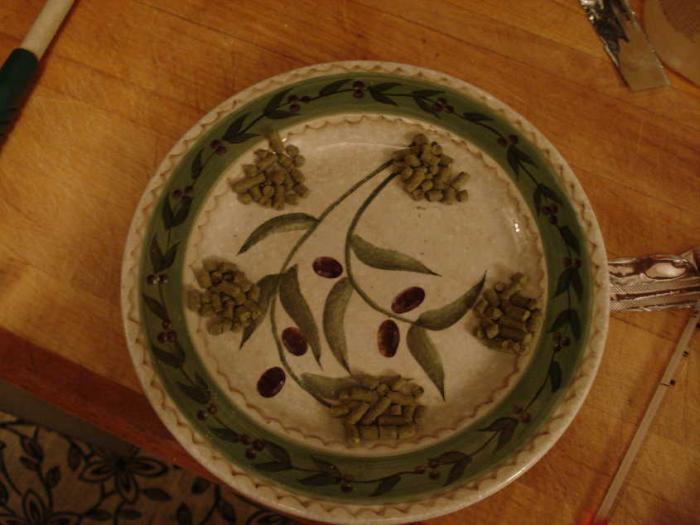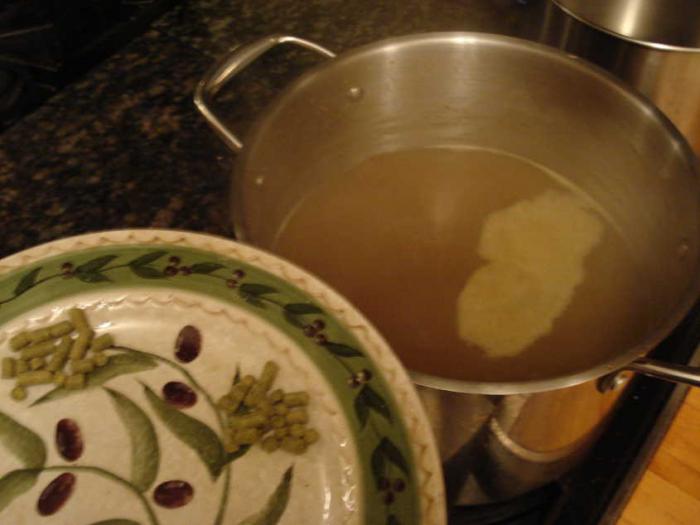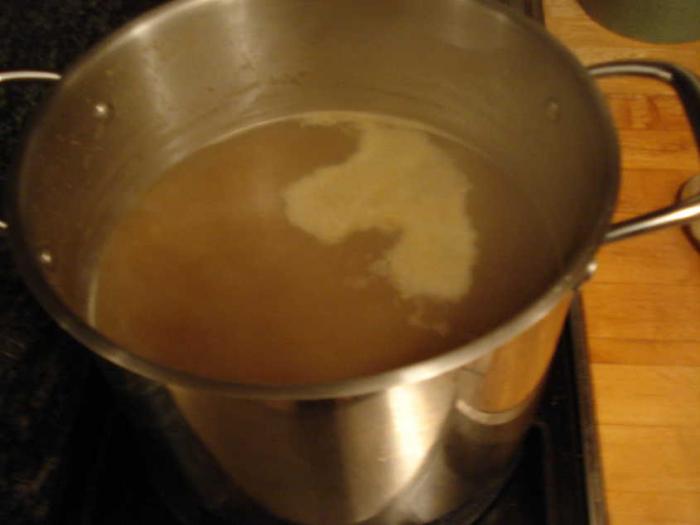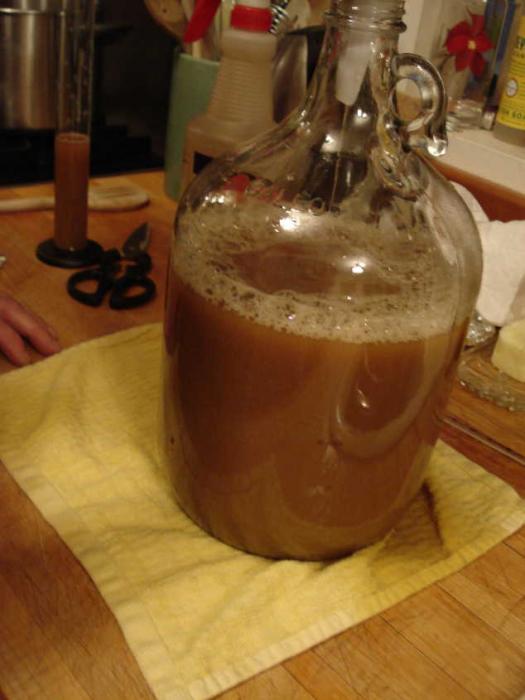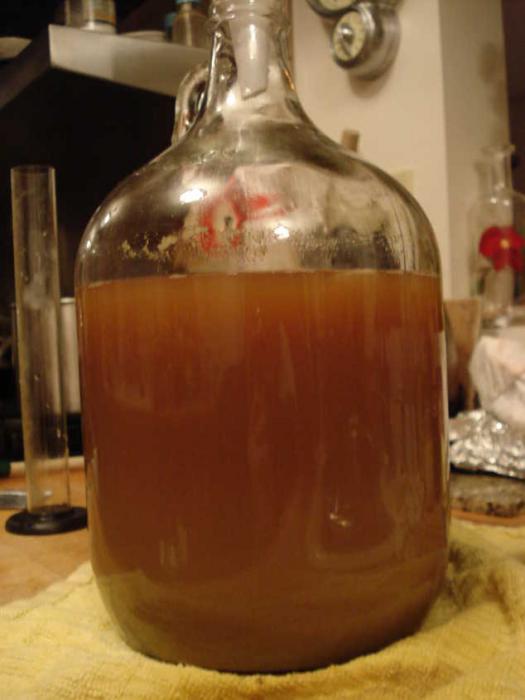IPAddict
Active Member
Hey I just did my first brew! I wanted to get some feedback and I had some questions as well. I'm using a 1 gallon starter kit from Brooklyn Brew Shop, and I'm doing their Everyday IPA. I started a thread about some questions I had before I actually brewed: New to brewing, lots of questions (brooklyn brewshop). Any feedback/comments are appreciated, thanks!
Brewed on Wednesday, 10/17/12. Prep time took about 45 minutes, and the whole brewing process took about 3.75 hours. Followed the directions that came with the kit, for the most part. Got through it with some minor difficulties, but overall pretty straightforward. Had a great time, and can't wait to see how it turns out!
Here's my log:
[LOG START]
Wed, Oct 17, 2012.
4:27p prep
5:13p start
5:35p steeping grains (60 min)
- having trouble getting to 144-155 degF range (staying in ~162 degF)
- got it down to ~148 degF (45/40 min left)
- 146 degF (30 min left)
- 144 degF (20 min left, bringing heat up)
- 150 degF (10 min left)
- 148 degF (done)
- letting it steep for an extra 15 min due to temp range complications in the beginning
6:50p raising mash to 170 degF
6:55p sparge
7:05p bring to boil
7:16p foamed, reduced heat to rolling boil, added columbus hops
- added 1/5th cascade hops (7:31p)
- added 1/5th cascade hops (7:48p)
- added 1/5th cascade hops (8:01p)
- added 1/5th cascade hops (8:11p)
- added 1/5th cascade hops (8:16p)
8:17p placed in icebath
8:41p cooled to 70 degF
8:57p took hydrometer reading: OG 1.116
8:59p yeast added and shaken
9:01p blowoff tube connected and fermenter put in a cool dark place
[LOG END]
I replaced the blowoff tube with an airlock about 4~5 days after fermentation started. I checked up on it everyday for the first week, then about every couple days til now, which has been 15 days. At 21 days I'm planning on taking a hydrometer reading and seeing how it looks. If the ABV is close to what the recipe says it should, I'll check it the next 2 days to make sure it's done and then begin the bottling.
I didn't log anything after I set it down in the cool/dark place to ferment. Now I'm thinking I should log anything I do (change to airlock, frequency of co2 being released, color, amount of krausen, etc) as well as anything I plan to do. I do plan to log the beers characteristics when I end up drinking it, and the FG of course. I'm also thinking I should make a template for a log sheet once I've brewed a few times. I also plan on coding a program to process and store the data once I've entered it in.
With that all said, how does my log look? I'm sure I'm missing some things so please let me know. Any advice on it?
I did have a few issues along the way, and some resulting questions:
That's all the questions I can think of for now. And on a side note, the directions in the book differed slightly from those on the ingredient kit, and the yeast does not list an ideal fermentation temp on the packet. Thanks for reading, below are the pictures.
1st pic: Bringing the water to a boil for steeping the grains in.
2nd pic: Got the spray bottle of sanitizer.
3rd pic: Plugged the sink and made a sanitizing solution. It's a 10 gallon sink, so I think I'll go find a 5 gallon bucket
and make it easier.
4th pic: Steeping the grains.
5th pic: Hops and yeast that came with the IPA kit.
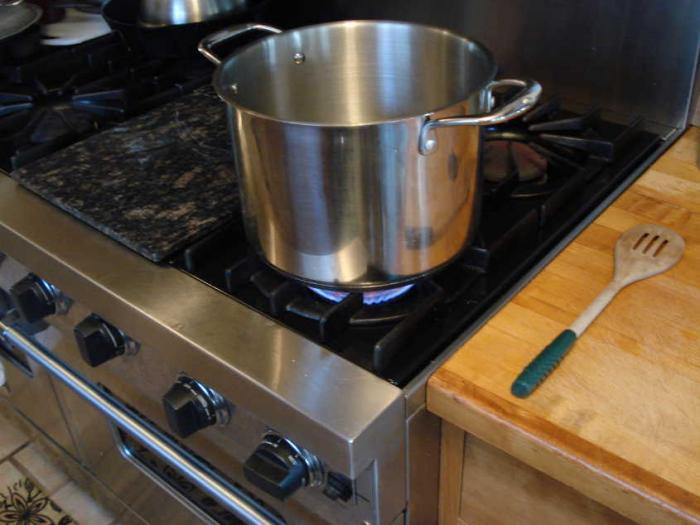
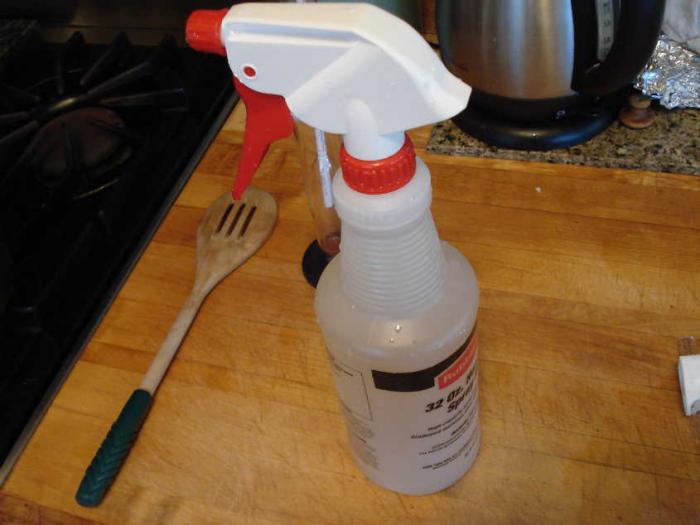



Brewed on Wednesday, 10/17/12. Prep time took about 45 minutes, and the whole brewing process took about 3.75 hours. Followed the directions that came with the kit, for the most part. Got through it with some minor difficulties, but overall pretty straightforward. Had a great time, and can't wait to see how it turns out!
Here's my log:
[LOG START]
Wed, Oct 17, 2012.
4:27p prep
5:13p start
5:35p steeping grains (60 min)
- having trouble getting to 144-155 degF range (staying in ~162 degF)
- got it down to ~148 degF (45/40 min left)
- 146 degF (30 min left)
- 144 degF (20 min left, bringing heat up)
- 150 degF (10 min left)
- 148 degF (done)
- letting it steep for an extra 15 min due to temp range complications in the beginning
6:50p raising mash to 170 degF
6:55p sparge
7:05p bring to boil
7:16p foamed, reduced heat to rolling boil, added columbus hops
- added 1/5th cascade hops (7:31p)
- added 1/5th cascade hops (7:48p)
- added 1/5th cascade hops (8:01p)
- added 1/5th cascade hops (8:11p)
- added 1/5th cascade hops (8:16p)
8:17p placed in icebath
8:41p cooled to 70 degF
8:57p took hydrometer reading: OG 1.116
8:59p yeast added and shaken
9:01p blowoff tube connected and fermenter put in a cool dark place
[LOG END]
I replaced the blowoff tube with an airlock about 4~5 days after fermentation started. I checked up on it everyday for the first week, then about every couple days til now, which has been 15 days. At 21 days I'm planning on taking a hydrometer reading and seeing how it looks. If the ABV is close to what the recipe says it should, I'll check it the next 2 days to make sure it's done and then begin the bottling.
I didn't log anything after I set it down in the cool/dark place to ferment. Now I'm thinking I should log anything I do (change to airlock, frequency of co2 being released, color, amount of krausen, etc) as well as anything I plan to do. I do plan to log the beers characteristics when I end up drinking it, and the FG of course. I'm also thinking I should make a template for a log sheet once I've brewed a few times. I also plan on coding a program to process and store the data once I've entered it in.
With that all said, how does my log look? I'm sure I'm missing some things so please let me know. Any advice on it?
I did have a few issues along the way, and some resulting questions:
- When steeping the grains, I had some difficulty getting the temperature in the correct range. In the future, I think I can figure out when to kill the heat and have it land in the range. But when I found myself higher, as directed I poured in 1/4 cup of cold water to cool it. I was scared about adding too much (in the end I shouldn't have) and so I poured, stirred, took the temp, waited, and then had to do it again a few times to get it right. I did this probably too slow and it seemed to take about 15 minutes to get into the right range. Should I be adding more than 1/4 cup, or just really adding it quicker to bring it down asap?
- When taking the temp, I stirred to even it out, and took the temp from the middle area, careful to avoid the bottom of the pot which might affect the reading. Is this how I should do it?
- Since I had problems getting the grains to the right temp for the first 15 minutes, I let it steep, with in the range, for an extra 15 minutes, hoping it would pull the fermentable sugars that were missed in the first 15. Was this a good idea, or was it complete folly?
- When I siphoned the wort into the carboy, I used a mesh strainer as directed. I'm not entirely sure it was fine enough to catch all the hops, as the wort looked greenish in the carboy. Is this something to worry about? It seemed to clear up as everything settles, and it definitely looked like beer a day or two later. I'm thinking it's gonna be fine (and hoping) since hops have the preservative, but I'd like some reassurance. You can see pictures towards the end of the thread.
- If I need to strain it better, can I line the mesh strainer with cheesecloth or something? Or should I go out and get a finer strainer?
- I didn't have a scale, so I divided up the cascade hops into fifths by sight. They were pellets, I don't think that really mattered too much, right?
- When I took the first hydrometer reading, I sanitized the test tube and hydrometer before I poured in the wort. After I poured it in and took the reading, I poured it back. Everywhere I've seen they keep saying not to pour it back, but as long as everything's sanitized, correct? Can I do the same thing for when I take the FG?
That's all the questions I can think of for now. And on a side note, the directions in the book differed slightly from those on the ingredient kit, and the yeast does not list an ideal fermentation temp on the packet. Thanks for reading, below are the pictures.
1st pic: Bringing the water to a boil for steeping the grains in.
2nd pic: Got the spray bottle of sanitizer.
3rd pic: Plugged the sink and made a sanitizing solution. It's a 10 gallon sink, so I think I'll go find a 5 gallon bucket
and make it easier.
4th pic: Steeping the grains.
5th pic: Hops and yeast that came with the IPA kit.








